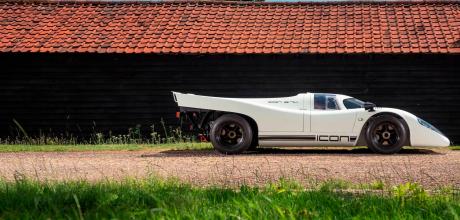2022 Icon 917K
The invigorating aroma of the morning’s fresh dew permeates the clouds hanging over Wisbech, England, the steam rising from the parking lot’s asphalt while last night’s rain begins to evaporate after a rare appearance of the sun. Once a thriving port and agricultural center of 18th-century Britain, Wisbech, Cambridgeshire was a prosperous community known for its magnificent Georgian architecture and small-town atmosphere, devoid of the usual noise pollution caused by cars and planes — though now, not entirely quiet.
On this particular morning, Wisbech’s industrial center is not just a place of business: Now, it is 1970, and the third round of the World Sportscar Championship season is in full swing. A Porsche 917 rounds the corner down the street with a thunderous downshift, its stiff suspension creaking as it makes its way over the hump and through Icon Engineering’s gate; the engine idling; then, shutting off with a satisfying clunk.
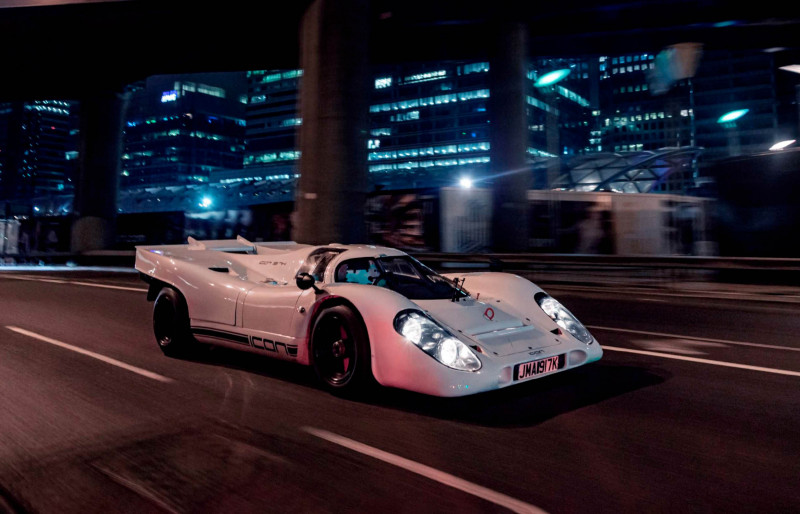
Ferdinand Porsche famously said: “The last car that will be built will be a sports car” — a statement which would remain the Automakers’ mantra to this day. Though we have since lost the automotive great, we have not lost his legacy — and Icon Engineering is here to prove that true.
They say an Engineer’s work is never done, and that may very well be correct. When you have a naturally-inquisitive brain, a completed project never marks the end of curiosity. To experience lifelong learning is to experience the lifestyle of an Engineer. Sunday, April 12, 1970: A 13-year-old Dave Eaton stared, utterly transfixed by the winding-road circuit in front of him.
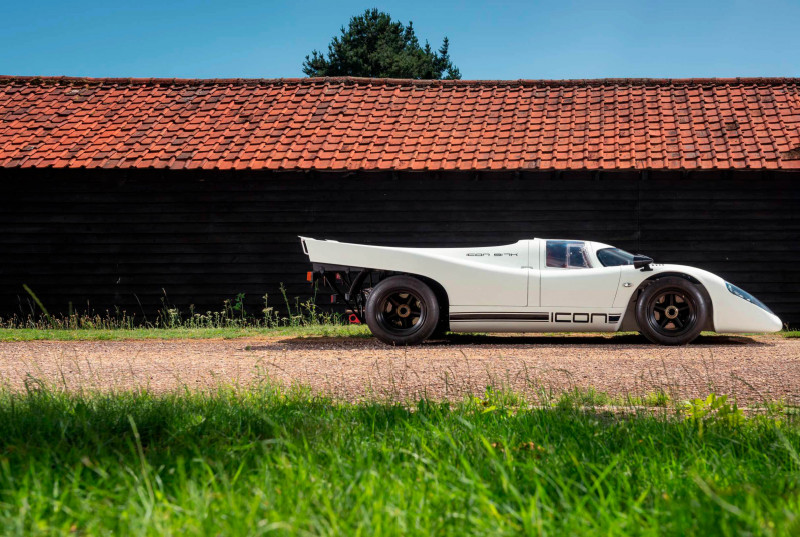
The windswept track littered with debris brought on by Kent’s absolutely brutal and unyielding British weather. Then, it happened. The leaves began to stir, the asphalt began to tremble while the raw screech of the flat-12 preceded the behemoth while it ripped through the corner: sucking the debris underneath its chassis and ejecting it out the back in a dramatic spray – like a grander marlin emerging from the depths of the sea. A wet-weather specialist, Pedro Rodriguez had made up five laps – following his pit exit – piloting the 917K to a 1-2-3-4 Porsche victory and cementing his name in racing history — history Dave had witnessed, firsthand. There, still mesmerized by the downshifts of the Kurzheck, he had made his decision: “It was that race that I decided I needed a 917, even if it had to be a recreation … but a good recreation!” And good it was.
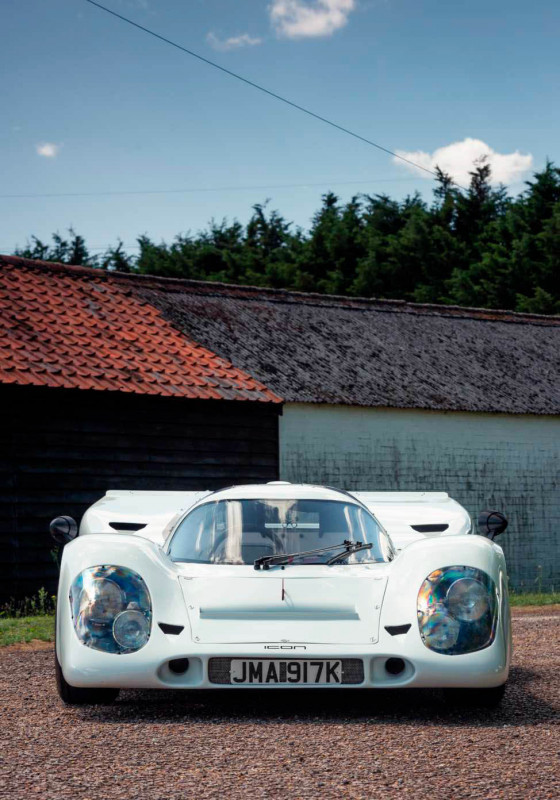
The memory of that day has clearly never left Dave’s mind. Pursuing a highly-lucrative career in automotive engineering, he found himself designing and managing both commercial and concept projects for a menagerie of OEM brands: including the likes of Ford and Bentley. From Japan to Germany, he has provided his expertise to like-minded professionals around the world.
His garage has seen an Alfa Romeo Montreal and Lamborghini Espada nestled within – poster cars which many of us would only dream of. But, after an incredibly-fruitful 40-year-long professional career in the industry and an equally-rewarding personal life, something was still missing, and Dave knew the answer: “I blame Pedro,” he admitted with a smile on his face.
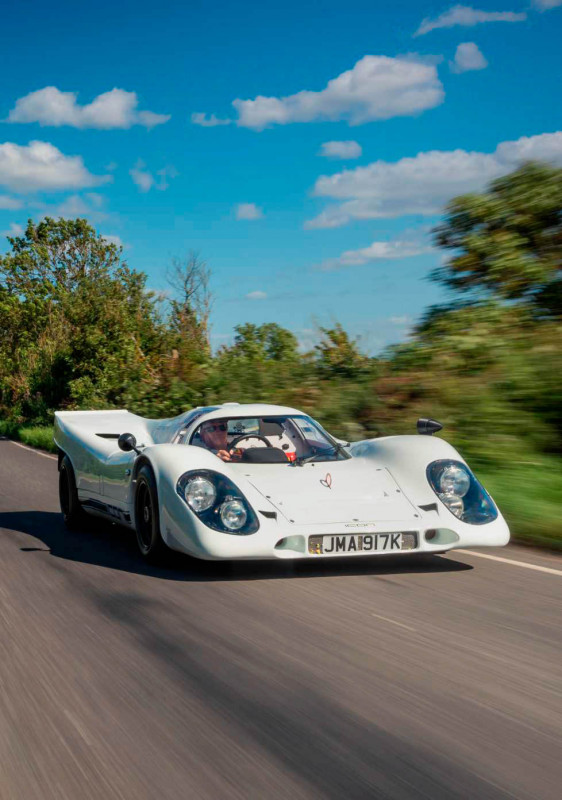
The why was there, but not the how. A capable Engineer like himself could navigate the replica project, but finding the parts? That was the hard part. It is not like motoring icons just pop up on the classifieds or could be ordered online … or could they?
Fast forward four years later to August, 2011: A listing pops up on the classifieds – a little blip on the radar; a lost ship straying into unknown waters; a wild-card. Exactly what Dave needed.
The PistonHeads description of the 917 bodyshell in question was rather depressing. Ideas circulating in the comments saw the bodyshell being used as everything from a kit-car exterior to a downright mad “edible jelly sculpture … [centerpiece]” for a Le- Mans-themed party. After contemplating its uses, many enthusiasts seemed to reach the same conclusion as the article: agreeing that “sadly, it looks like buying [the] bodyshell; then, building a car around it isn’t as easy as it sounds.” Terrified by the alternatives, this 917 skeleton was certainly praying for its savior, who happened to be a stalwart Englishman who “took umbrage to” his fellow PistonHeader’s (PHer’s) remarks. Now referred to as “that idiot that bought that shell” on the PistonHeads forums, it was time to prove everyone wrong, though it indeed would not be as easy as it sounded. Eagerly inducting his friend and fellow Engineer John Hartman into his new world, the “10 Years of Lunacy” would begin – under the newly-founded Icon Engineering namesake. Determined as they may be to realize this dream, there was no denying the grandeur of such a task.

Eaton was not deterred, and neither was Hartman. Their combined decades of engineering experience was a “major asset” and catalyst to their vision. With widespread industry contacts and a deep understanding of the idiosyncrasies of design, Eaton was confident in his approach. Excel spreadsheets organizing everything from material receipts to hours worked were documented: bills of materials, Gantt Charts, blueprints — the whole nine yards. Good engineering stems from good organization – something that Dave learned well over the course of his career. He said: “I used that philosophy on our 917K project.” While the two automotive veterans were well-versed in many aspects of reverse-engineering prior to tackling their replica project, there was one factor left to complete the equation: CAD.

In the automotive sector, modern technology continues to improve. You use technology to make better technology, and the cycle seemingly repeats itself. The same can be said of computer-aided design (CAD), that is largely used by the engineering community to plan, visualize, and execute both simple and complex design systems. As Eaton puts it, “it’s not just CAD that’s important; but, also, the complete genre of modern technology which has evolved over the last 30 years.” Reverse-engineering processes which would normally take months are now completed in a matter of hours: The fiberglass shell was laser scanned and automatically populated into the industry-standard 3D software, Catia, as a complete model: allowing for efficient and accurate sizing of the chassis. By bypassing the step of painstakingly taking dimensions with physical tools – that may have large error tolerances – the digital method aims to reduce human error. Eaton confirmed that, while this process could have been “done manually, [like what] Porsche did back in the late-1960s to build sixty cars,” it would have been far more tedious. If the Icon Engineering team really wanted to build their historic replica the historic way, that would have meant “perhaps three 25-[foot]- long drafts [of various dimensions]… to layout mylar sheet; and, then, start manually adding the points to each view”— an option which could have been explored, for nostalgia purposes.
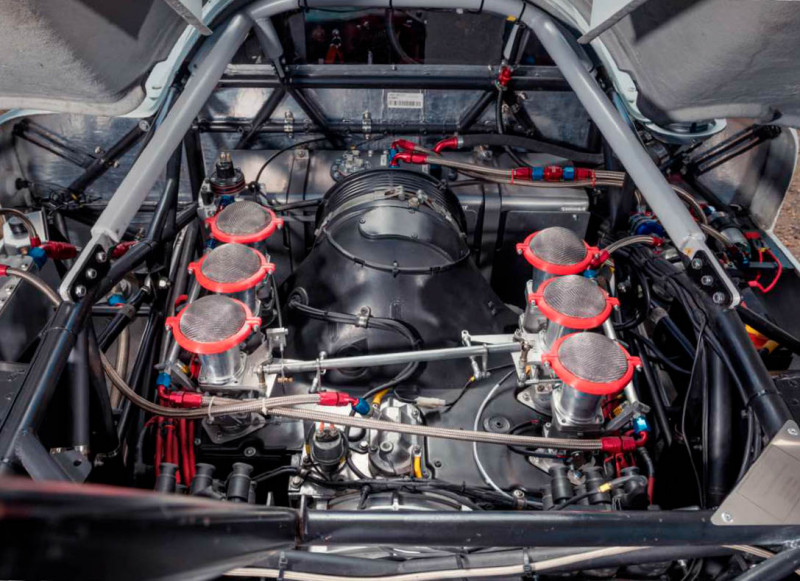
Instead, relying on scale drawings of the original aluminum chassis from his 917 books, Dave and John were able to determine a scale factor for the new steel chassis using the shell’s dimensions as a constraint and begin the process of mapping out the chassis nodes in CAD: therefore, solidifying the backbone of the Porsche. Bends and joints between cage tubing could be created digitally: a task which, when approached manually, “would have taken months; and, then, to machine manually would have taken [months more].” With modern technology, Dave and John simply sent “220 CAD files to the laser cutters; and, [two to three] weeks later, [got] 220 tubes back.” All of which fit perfectly together, as expected. From there, running stress and force simulations on components or starting the manufacturing process is far easier – especially with today’s widespread use of finite element analysis (FEA), computational fluid dynamics (CFD), and computer-aided manufacturing (CAM) softwares, that are often built into the original design program. Though the Icon Engineering team did not seem to hit any snags, unique challenges arose once they began tackling the topic of road legality: The major culprit was the United Kingdom's Individual Vehicle Approval (IVA) test, that utilized a fifty-page manual indicating the safety benchmarks which must be met by a specific vehicle’s design. Dave said: “Everything in that I already understood … [but we had to design] specific [safety] items.” A process which he was comfortable embarking on thanks to his own credentials and those of his network: “As an industry insider, I had the contacts to run CAE on all these items, so [I] had confidence that everything would work during the build process.” And he was right!

Dave said: “Without CAD, [I] would have never attempted this project; also, having the complete project in CAD enables us to manufacture accurate replicas for customers.” Which can then be built to the same standards of quality time after time.
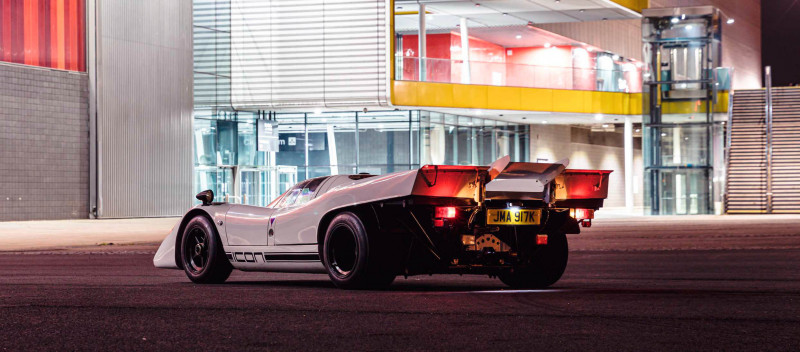
The replicas – of which only five are being built a year for lucky customers – come equipped with a modernized flat-six, as opposed to the original flat-12. Icon’s objective with the first set of replicas was to make them “evocative of the originals” while retaining the bang-for-your-buck experience. But the nostalgic heart of the beast, the 50-liter flat-12, has been replaced by an air-cooled 3.6-liter flat-six plucked straight from a 964 911: with the option of a watercooled or turbocharged variant — a build thoroughly vetted by John, who has built many Porsche engines over the years. Hartland said he is “very pleased that the engine’s on full chat and sounding gorgeous.” And our ears certainly do not disagree! Diligent attention to detail in the engine-tuning process means the exhaust sounds as close to the original power plant as it can sound – sans six cylinders, of course.
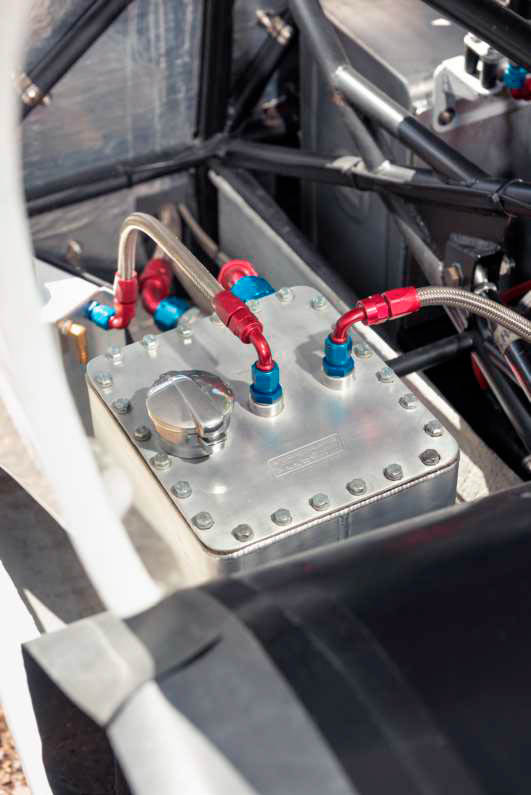
Add in the delightful tones of the standard transaxle five-speed rowing through the gears, and you are already sold! Though the replica already claims a seriously-impressive 95-percent build accuracy compared to the original, Dave said they are not done yet.

“Now [that] we have an accurate recreation … next could be a reverse-engineered [flat- 12],” largely due to a cohesive chassis design which Dave reckons is “roughly [0.4 to 0.6 inches] [within] the original” — the final piece of the puzzle which could be set, if the elusive 1.2-million-euro powerplant could be sourced and financed.
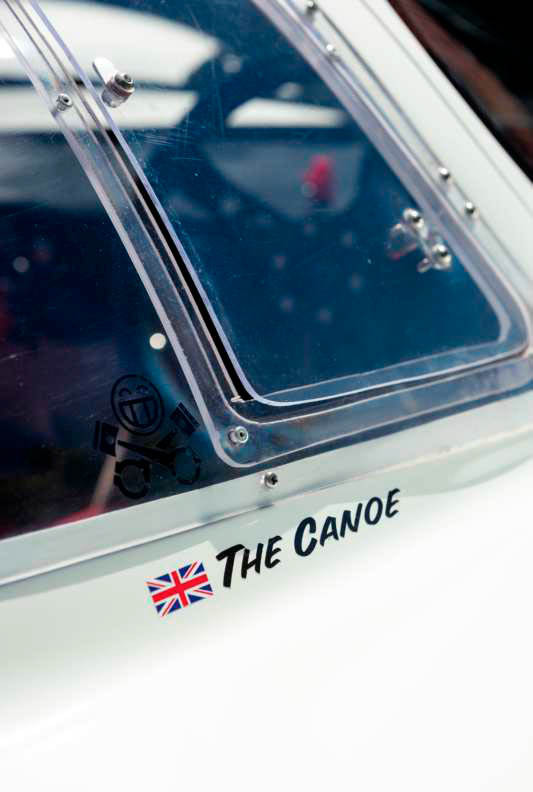
For those who would prefer a future-forward replica, Icon is determined to acknowledge the demands of an evolving industry. “Having the complete project in CAD … [enables] us to use the CAD to manufacture a composite tubular chassis and moulds forcomposite body panels. We are already looking at an electric version … having everything in CAD will enable us to package the complete electric driveline and any chassis modifications; and, [then], design any new mounting brackets prior to manufacturing anything.”
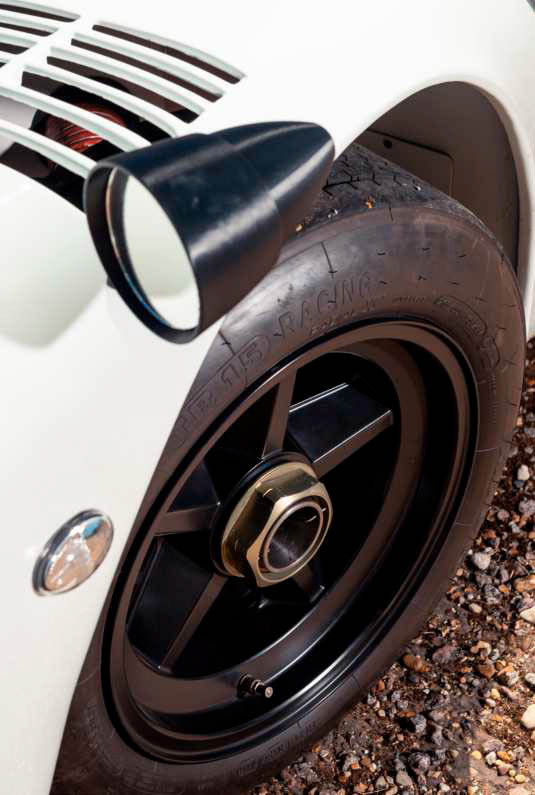
When asked how this undertaking challenged their professional experience, Dave responded honestly: “The project challenged our professional experience, but only relating to new areas we had no experience with. But we always found solutions to any of the technical issues.” For the seasoned Engineers, the journey was just as sweet as the outcome. Both John and he were fascinated by the opportunity of diving deeper into technology which they had not previously focused on in their careers. Eaton said: “It was fascinating because we had to develop magnesium wheels, collapsible steering columns, [and] assess various safety-critical items, such as [the] front end impact … to get road legality. We learned a lot more about engineering from the project … and, now that we have a running road- and track-legal prototype, it feels very positive because the car generates such positive feedback.” American Engineer James Kip Finch once said: “The Engineer has been, and is, a maker of history” — and he would be right. As Porsche has made history with the 917K, Icon Engineering has honored it, and perhaps made its own history in the process.
“Satisfying,” that is how Dave described the outcome of Icon Engineering’s “10 Years of Lunacy”, and for good reason. Dave said: “There are dozens of GT40 replicas, but I wanted something much more individual; [though], this is not the real reason [for the replica project].” The real reason remains frozen in time on that rainy day in 1970, at the Brands Hatch circuit in Kent, England. And that is as good a reason as any.


